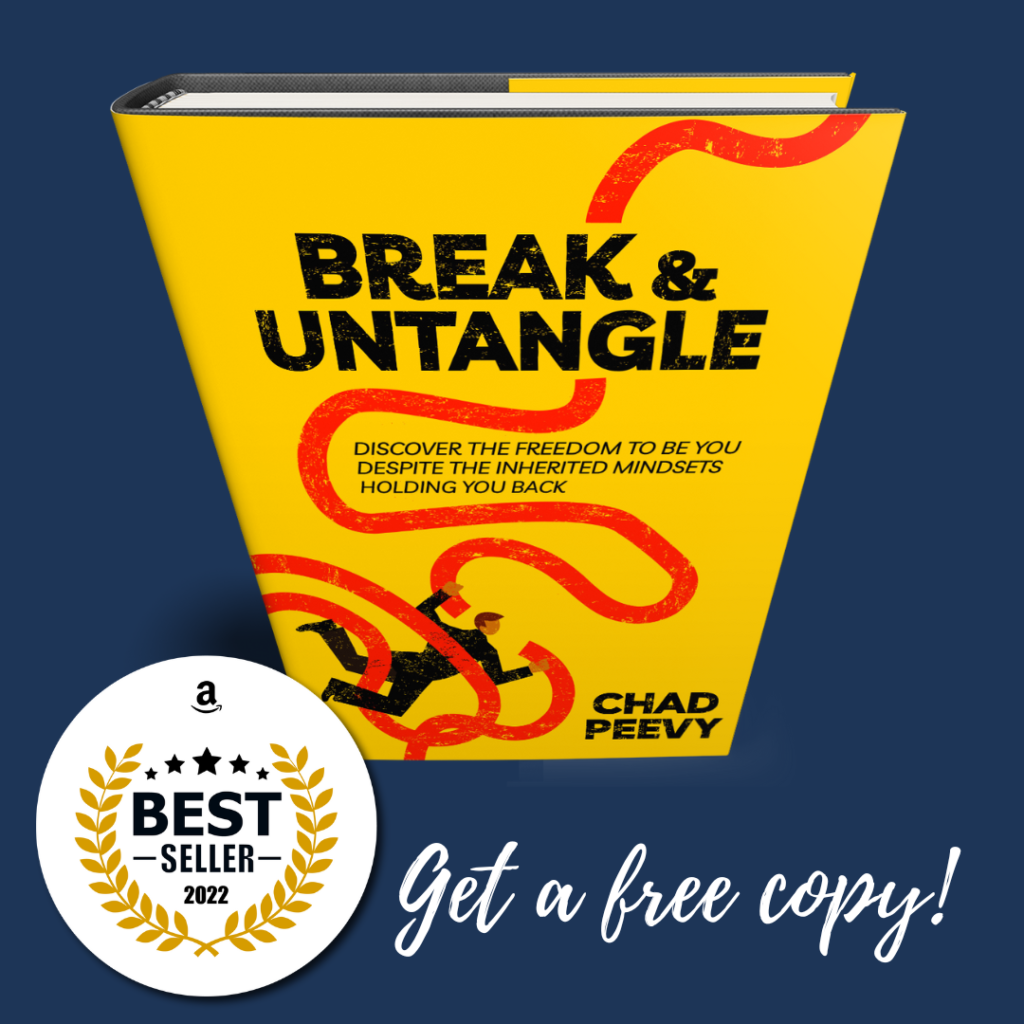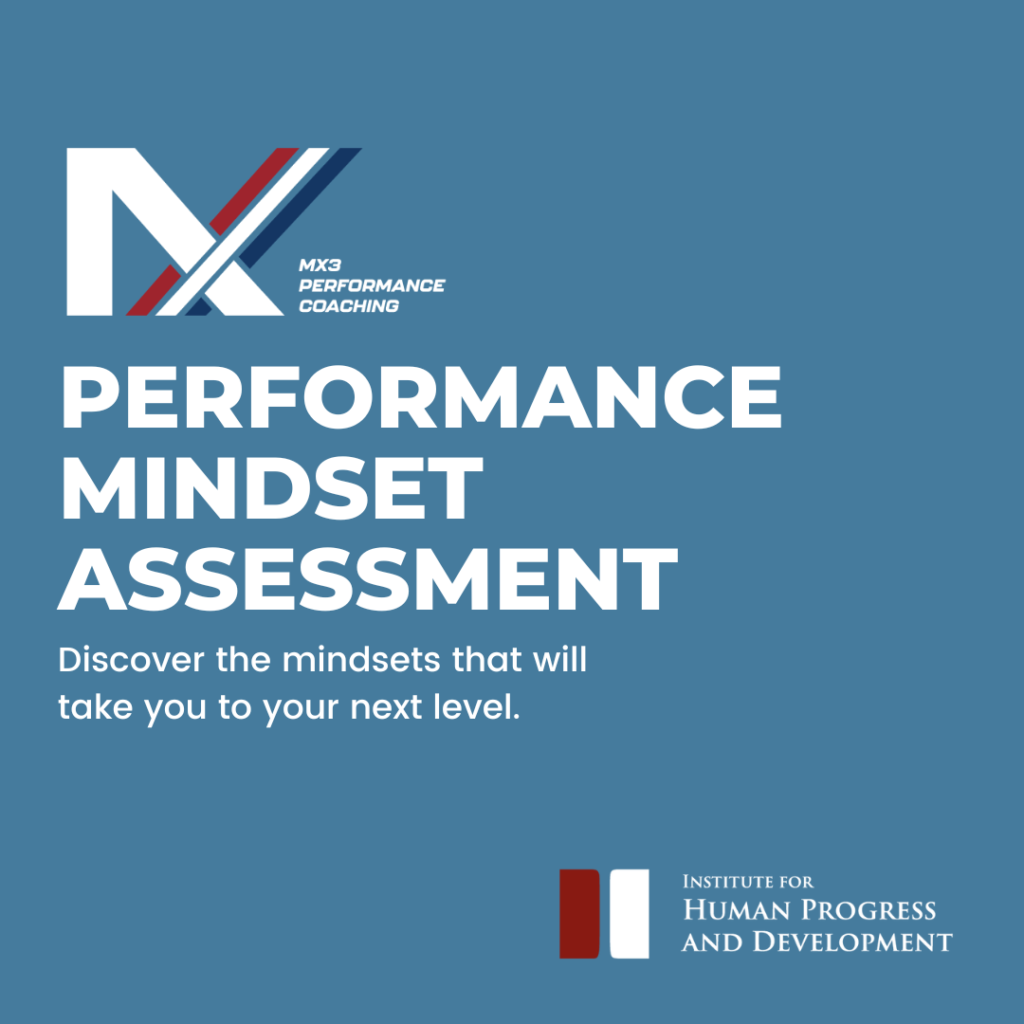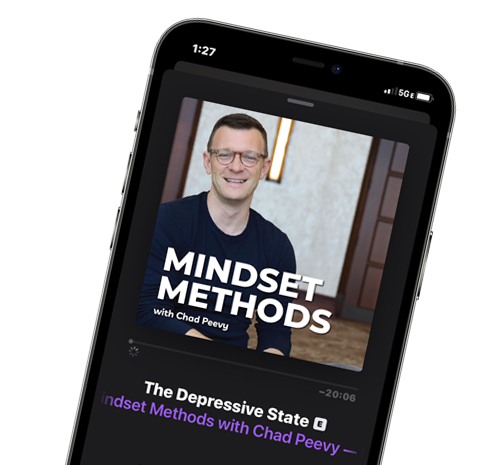Life is 10% tactics and 90% mindset.
In this episode, Chad discusses mindfulness and how essential it is to still the mind. He outlines 4 areas of a mindfulness practice: awareness, gratitude, intention, and meditation.
Imagine for a second that you have an itch on your leg. What happens next? Your brain senses the discomfort and what happens? You reach down to scratch. Instinctively, without thinking.
Our habits and programming cause us to do the same thing in all areas of our lives. Someone says hi to us, looks at us the wrong way, cuts us off in traffic, or even when we sit down to eat.
We instinctively react to the stimuli. We say hi back, we get angry, we honk our horn, we eat everything on our plate because that’s what we’ve been programmed to do.
A practice in mindfulness, would be to simply observe what you are seeing, hearing, or experiencing. If necessary, you then respond in a manner in which you have consciously decided to respond as opposed to instinctively reacting to every stimuli that you experience.
Mindfulness is about self-regulation of the mind. And mindfulness is a practice that can be integrated into our daily lives.
How much of your life is spent just scratching the itch?
Today I’m going to share with you my mindfulness practice. My hope is that you find it helpful and discover ideas that you can adopt for yourself. Or at least set you on a journey to discover your own mindfulness practice – to find the right tools and techniques that work for you.
Hi, my name is Chad Peevy, thank you for listening and subscribing to my podcast.
Before we get going, I have a little confession.
Every time I go down this mindfulness path, I start feeling a little too hippie-dippie
I grew up in the south, in Arkansas. I moved to Austin for graduate school where the idea of mindfulness is much more common. Truth is, a mindfulness practice sometimes feels like I’ve fallen into a web of tie-dye and beaded bracelets. For me, it can get a little too woo-woo. I usually check out on this stuff somewhere between the healing crystals and the talk about reincarnation. So for me, the idea of mindfulness has carried with it a little bit of a stigma. If that’s you, I get it, I really do.
I suspect that some of that stigma stems from the fact that I grew up in a fundamentalist church. We were Missionary Baptists – which means that we even looked at other Baptists with suspicion.
If you share my skepticism, then I just want to ask you to just hear me out today. As a fellow skeptic, I understand the resistance. But just go with me for the next few minutes.
What finally got me to buy into the idea of mindfulness has been the benefits that I’ve seen in my life first hand.
Mindfulness is a path I have been on and off for much of my adult life. I finally resolved to the fact that, as “too far out there” some of the mindfulness ideas may go, the benefits, particularly the 4 practices I’m going to share with you today, are just too powerful for me to ignore.
So let’s start by answering the question, what is mindfulness?
Being mindful is about having a degree of control over your mind so that your mind is your companion, not your enemy. Being mindful is about not falling victim to the whims of your emotions. It’s about putting yourself in the driver’s seat of your thoughts, not being driven by them.
If you start doing research in mindfulness you will find that there are many schools of thought around that word. From an expression of gratitude to being present with the people around you, to not being on your phone.
Today we’re using the word mindfulness to describe a state of being aware of being aware, you could also think of it as thinking about thinking. Now, I know that sounds like a little bit of a riddle.
So let’s just cut right to my goal of mindfulness… and that is our ability to think about and ultimately control what we are thinking.
I’ve shared with you in previous podcast about my own battle with depression and anxiety. I can tell you without reservation that a mindfulness practice helps me to better prevent and come out on the other side of those feelings.
Depression is a serious issue.
There was an article published last week in the Journal of Abnormal Psychology that raised a lot of eyebrows. I want to share with you just a few of the findings…
The rate of individuals reporting symptoms consistent with major depression in the last 12 months increased 52 percent in adolescents and 63 percent in young adults age 18 to 25. There was also a 71 percent increase in young adults experiencing serious psychological distress. The rate of young adults with suicidal thoughts or other suicide-related outcomes increased 47 percent from 2008 to 2017.
The study goes on to discuss potential reasons for that increase. Researchers suggested social media use and less face-to-face time with others, as well as a decrease in sleep.
If you’re interested, you can find a link to the full article on my blog at InstituteforProgress.com
Now, this podcast is not a substitute for professional help. If you experience symptoms of depression or anxiety, there is no shame in asking for professional help.
Depression, anxiety, fear – absent a physical or chemical abnormality – are the result of bad management of the mind. When I first realized that it was a bit of a punch to the gut. If it’s bad management of the mind, that means that I’m doing this to myself. If I’m doing this to myself, even if it may be the result of past or current circumstances, or social media usage or lack of connection with other people, then I have the power the change it.
Acknowledging that I have that power, realizing that what I am feeling is a management issue, gives me a feeling of control that I find satisfying. Because feeling depressed or anxious, then coupled with the idea that there is nothing I can do about it, that only perpetuates those feelings of helplessness and hopelessness.
Acknowledging that 1) it will pass and 2) that I can do something about it, gives me back my power.
And so to me, a practice in mindfulness empowers me. Even when I’m down, I know there are steps I can take to feel better.
I know that a practice in mindfulness helps me because when I’m in practice, I feel better. It’s even more obvious when I stop my practice. I forget that the reason I’m feeling good is because of the practice itself.
It’s like when you lose a little weight, you think, oh, I can just eat this cheeseburger now, it’s fine.
No. Step away from the cheeseburger, sir.
And so while I may sometimes vere in and out of the lane of mindfulness, there’s no doubt that a consistent practice of mindfulness benefits me.
So how does one practice mindfulness? I have a few ideas that I have discovered through research and my own experience. Today I’ll share with you the 4 practices that I use to exercise mindfulness in my life. These ideas fall into 4 categories: awareness, gratitude, intention, and meditation.
First of all, awareness of what it means to be mindful. Like so many other things in life, we have to first recognize that there is indeed a problem. The problem in this case is that we are living our life on autopilot.
Are you just going through the motions at the whim of your emotions? Are you living your life through the routine that was programmed into you by your parents or perhaps by your spouse or by your job? Are you consciously thinking about what it is that you want out of this life? Or are you just letting life happen to you? The difference can be the factor that determines the quality, satisfaction, happiness and success of your entire life.
How aware are you of the daily goings-on of your life?
I’m reminded of how we greet one another in polite society.
“Hi, how are you?”
“I’m well, how are you?”
“I’m well, thanks for asking.”
It’s a script, a script that we’ve all learned is acceptable by most and enough to allow us to get through nearly any interaction, really without any effort at all. If I see you walking through the airport, I don’t have to think about what to say, I have a script. Which may be fine in that circumstance, but how much else of your life is simply on auto-pilot? How much of your life are you living this way?
That script itself is your programming. That script, or programing is the rails on which we live our lives. Similarly, we have ways in which we react to situations as they arise. These are our default settings.
Think about those times when things don’t go your way. Maybe your default is to blame everyone else for the problem. Maybe your default setting is to blame yourself for everything, allowing everyone else off the hook. Maybe your default is to quit because it got too hard. Maybe your default is to keep pushing and fighting even when you shouldn’t.
My challenge for you today is to evaluate those default settings. Are you aware of your default reactions? Are you aware of how much of your life is reactions, rather than a conscious and intentional responses?
For me, I have a tendency to take on too much responsibility for any given situation. I too easily let other people off the hook for their behavior. This came up for me in therapy.
Through my own journey of self-discovery I learned that I likely take on too much responsibility for a situation because of something called ‘narcissistic defense mechanism.’ It sounds like a terrible thing to have, doesn’t it? Just the name is terrifying.
I’m not a psychologist, but the way I understand this idea is that when I was young, I picked up the idea from my mom or dad or both, that my needs or wants were a burden to them. At some point I began to believe that what I wanted or needed was too much for them to handle because they already had enough to handle without me adding on top of their already existing problems.
My perception was that they had too much to handle, and could not handle any more, specifically me asking or demanding for more. So I held on to those needs, I learned to not ask for help, I began suppressing my own desires in deference to theirs. This could have happened at a really young age, from the days of crying in the crib. I’m not sure exactly where I picked it up, but I would imagine it’s a culmination of many instances over many years that lead to this type of programming.
It’s not hard to see how this would show up for me as an adult. I don’t reach out to people for help, even when I know I should. I don’t trust other people to do things for me because I make excuses for them as to why they are unwilling, unable, or simply incompetent to deliver for me. I don’t lean on people emotionally, for me that’s too much of a burden to put on someone.
In reality though, we are social creatures. We were made to rely on one another. We have survived because we relied on one another.
To work through it I have to be aware that it’s happening. I have to make more of an effort to lean on and rely on other people. I’m learning that it’s a bit of a balancing act, sometimes I find myself relying too much or leaning emotionally perhaps earlier in a relationship than the other person is ready for.
Sometimes it gets awkward, but awareness is a practice, a work in progress.
My second mindfulness practice is gratitude. And not just gratitude for stuff or things, but gratitude for all the facets of my life, even the stuff I don’t like. Gratitude for the roof over my head, the food I eat, the people in my life, the breath I take. But also gratitude for the challenges I’m faced with and my ability to learn and grow from them. Particularly this time of year, tax time. I have to pay in to the IRS every year. Instead of complaining about it, I prefer to express gratitude that I had a great year, that I have the money to pay the tax bill, and that I’m fulfilling my obligation as a citizen.
Sounds nice, doesn’t it? I freely admit that some expressions of gratitude are easier than others. But I practice nonetheless. Because today’s obstacle is tomorrow’s victory.
Gratitude, to me, is a little self-serving. I honestly feel like the more gratitude I express for my life, the better my life gets.
It’s like when you say, “I’m so grateful” that the Universe responds by saying, “Well, if you think that’s good, let me show you how much better it can be!”
Gratitude is like Miracle Grow. Could your plants grow without it? Sure. Will your plants be so much better with it? You’re damn right they will.
So how do you put gratitude into practice? I have a couple of suggestions.
First, if you keep a journal – whether a gratitude journal or just a daily planner – make it part of your daily routine to reflect on your life through the lens of gratitude. And as I said before, even the challenges you face deserve your appreciation, because it’s through those challenges that you are going to grow.
My second suggestion is to simply be more mindful or aware of gratitude. Reprogram yourself through reminders and affirmations to be intentional about seeing your life through the lens of gratitude so that you go through your life in a constant state of gratitude.
This is one thing my dad got right. My dad was a stickler for making sure that we expressed our gratitude. “Did you say thank you?” he would ask. It was saying thank you for simple things but saying thank you for the simple things instilled a sense of awareness for gratitude.
My mom and dad also prayed with me and my brother every night. Those prayers as kids were largely expressions of gratitude for basic things. But as a result, we were made to bring our attention each night to the blessings in our lives.
My folks messed up a lot, but the gratitude thing, they got that one right.
Gratitude means we have to stop complaining and criticizing ourselves for how far along we think we should be, and instead, celebrating and recognizing how far we’ve come.
The third mindfulness practice is intention.
When you woke up this morning, did you decide the way this day was going to go? What you are going to accomplish? How you are going to feel? How you are going to treat people? How you expected to be treated?
Our intentions are how we take our life off of autopilot and put our hands on the controls. Will there be bumps in the road? Sure, of course there will be. But nonetheless, we are driving. We determine when and how much we swerve. We determine how fast, how slow, and when to stop. We have a destination and we are intentionally putting pavement behind us to get there.
I have very successful clients who tell me that this was the thing that changed the game for them. One client reported to me an increase of 30% in her business when she started integrating this idea into her life. Instead of letting the day drag you and push you around, you determine what today will look like.
So how do you put intention into practice? If you’re already journaling, keep it there. Every day, ask yourself those questions I’ve asked you here:
How is today going to go?
What am I going to accomplish today?
How am I going to feel today?
How will I treat people today?
How do I expect to be treated today?
Who will I be today?
Be aware of where you want your day to go.
When you’re not doing what you intended, you’re widening the gap between where you are and where you want to be. A lack of intention not only widens the gap, but ignores that the gap itself can be traversed.
And the finally, my fourth suggestion for practicing mindfulness is meditation. There is so much literature and tools in the marketplace that can be a resource for you. Because of that I’m only going to tell you about my meditation practice and encourage you to go out to develop your own practice.
Meditation is the ‘practice’ part that I have craved for in other parts of personal and even professional development. Meditation is the daily practice by which I strengthen the mindfulness muscle.
Therapy for example, while I am an advocate for and find very beneficial, to me, the dedicated daily practice part is missing. Therapy has helped immensely. Therapy helps me connect the dots between what I went through as a kid and how that has impacted my life as an adult.
Meditation, I believe, has been the most beneficial, immediate source of mental relief for me.
Maybe it stems from the nightly prayers with my family, but I need something to do every day. That type of habitual practice in my life has been helpful.
I like meditation because it stills my mind. It’s the practice of letting your mind go, but not so that it can run wild, but so that you can slow it down. It helps me let go of un-useful thoughts and keep my past and future self from overwhelming my present self.
Full disclosure, I’m a baby yogi. My practice is so simple. But the fact that it’s so simple and yields an exponential return for me, hopefully encourages you to start your own practice.
So how do I practice meditation?
If I have fallen out of practice (which sometimes happens, I’m not perfect), or if I were just starting my practice then I would use a tool like the apps Calm or 10% Happier. These are guided meditation apps that will help you focus your mind. They will gently remind you where to focus your attention as you meditate.
If I’m in practice, I will meditate without the app. I begin by sitting comfortably with my back straight, legs crossed and my hands resting on my knees or in my lap.
I close my eyes and begin to breathe deeply.
I bring my focus to my breath, in and out. I do my best to just focus on the breath. Sometimes I can focus on just the breath for a full in and out sequence. Sometimes I can’t.
When I become aware of my mind drifting into thoughts about anything other than the in and out of my breath, I have this visual in my head of my hand gently nudging the thought along. I don’t beat myself up about it, I don’t punish myself for it in any way, I simply let the thought go and return my focus to my breath. I return my breathing to a normal pattern.
Close to the beginning of my meditation practices I will do a body scan in my mind. I start at the top of my head and work my way all the way to the bottom of my feet, checking in with every limb and portion of my body. I’m not making any judgments when I do this, I’m just becoming aware of my body. I do my best to relax each part of me as I think through this body scan. Dropping my shoulders, relaxing my tongue, my jaw, my forehead.
I honestly don’t know how long my body scan last, I’ve never looked at the clock to see. But once I’m through it, I return to my breath, focusing on in and out.
The length of my sessions depend on how practiced I am in my meditation at the time. If I’m just getting back into it, I start with 5 minutes. If I’m really practiced, then I will go closer to 30 minutes. If this is new to you and you’re just starting, that 5 minutes will feel like an eternity. Just stay focussed on your breath. You can do anything for 5 minutes.
As I mentioned, I am a baby yogi. I am no expert on meditation but I am an advocate for the practice. In your own research you’ll find that meditation is where some of the more woo-woo elements of mindfulness exist. If the extreme woo-wooness isn’t your scene (it isn’t mine), don’t discount the entire practice just because of that. Learn what you can. Find resources of more moderate meditative leanings. Or, if that’s your thing, go all in! Either way, you’ll be glad you did.
Life is 10% tactics and 90% mindset. Mindset is all about learning the skills of mindfulness. Whether you are looking to up your game in business or life, work on your mindfulness and you’ll find happiness in both.
As you develop your own practice, I want you to remember that throughout this podcast I have consistently referred to mindfulness as a “practice.”
Just like anything you want to get better at, you have to work at it. You have to set aside time in your day to do the work.
When you first started to walk, you fell a lot. When you first begin your mindfulness practice, you’re going to fall a lot.
Do you know how weird typing is? Have you ever thought about it? Do you remember when you first started typing? If was hunt and peck, lots of mistakes.
But you kept practicing. And eventually you got better.
If you’re like me, I still wear out the backspace button. But I’m better than I was when I started.
There are times when I meditate that I can’t focus on my breath for the life of me.
There are days that all I can come up with to be thankful for is being alive.
There are days that I forget to set my intention.
There are days where, I admit, I just go through the motions.
Your mindfulness practice will be full of opportunities for improvement and practice. So be kind to yourself. Honor your journey. And remember, you’re worth it.
It would help me so much if you would remember to subscribe to this podcast and leave a positive rating.
Thanks again for listening, until next week, I’m Chad Peevy.








